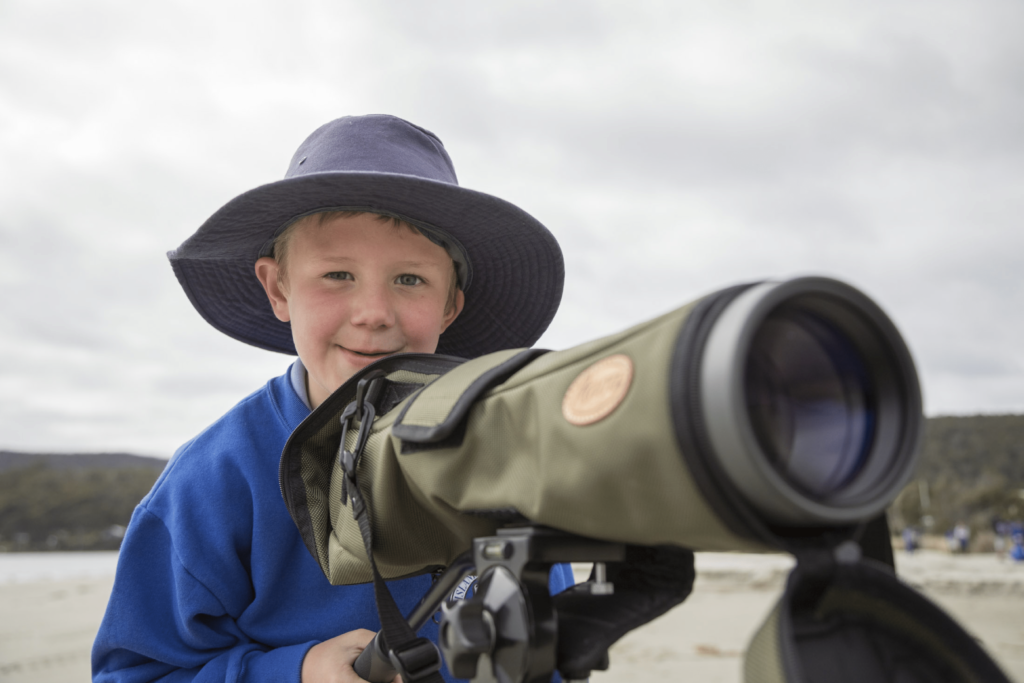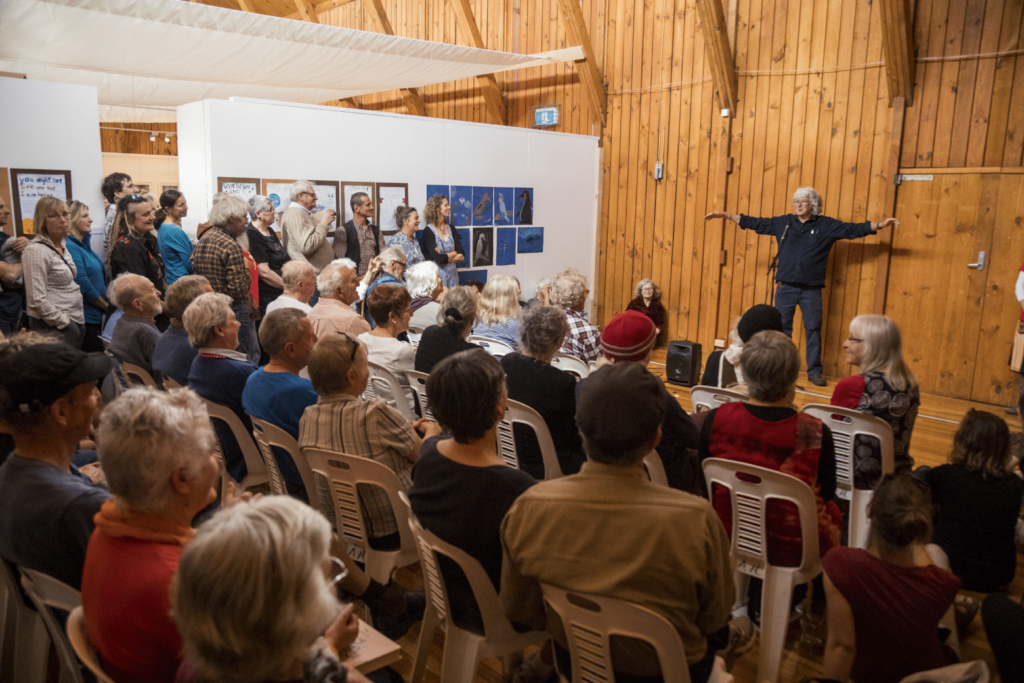Community stories: 23 January 2014
A summer hotspot
Bruny Island is one of those places that people tell you to visit in Tasmania – the population of this spectacular island, only accessible by car ferry, swells from 700 to around 4,500 over the summer months. The local economy has made the move from a mixture of farming, orchards and timber harvesting to one based on ecotourism, niche food production, acquaculture and sheep grazing.
There’s more to this festival than feathers
The Bruny Island Environment Network (BIEN) was formed in 2009, and membership stands at 107. Its aim is to promote the biodiversity, cultural heritage and scenic values of the island, generate resources and support for their protection, support sustainable economic activity, provide information to landholders and the wider community about environmental and conservation issues, work together to address these issues and provide a framework for action regarding timber harvesting.
One of the group’s activities is the Bruny Island Bird Festival. The young festival, which held its inaugural event in 2010, required some infrastructure and equipment to help it gain momentum and achieve its educational aims.
The group was awarded a Small Grant of $1,093 for funding to purchase a 3m x 4.5m marquee that would be used as the key festival and visitor information booth.
Everyone joined in
The festival is a focal point for longer term education, art and conservation projects with local school children and various other community groups, including a photography and art competition that drew many participants. The Men’s Shed blokes built nesting boxes to sell, the CWA groups organised the market day, and catering and tourism operators and boutique food operators offered special guided tours, tastings and accommodation packages.
Not only would the festival be a boost to economic activity in an otherwise quiet period (late October) but it would help to fund the conservation activities of the BIEN and demonstrate the wonderful array of bird life and the potential for alternative uses of the South Bruny Forests to provide ecologically, economic and socially sustainable benefit for all.
Year round benefits
The event was a great success with around 400 registered attendees and accommodation on the island was nearly fully booked. Mr Graham said that they have seen a subsequent increase in the niche sector of bird related tourism. “The beauty is of course that the birds are here all year round, so once awareness is increased by events such as the festival, the benefits continue beyond that time.”
The marquee proved extremely handy – and was ‘invaluable in the smooth running of the festival’. Volunteers and businesses could direct people to the marquee for any assistance if they were not able to answer queries, and it was a point for patrons seeking last minute details of their booked tours. It has been used multiple times since the event and has proved a useful addition to the island’s community equipment.




